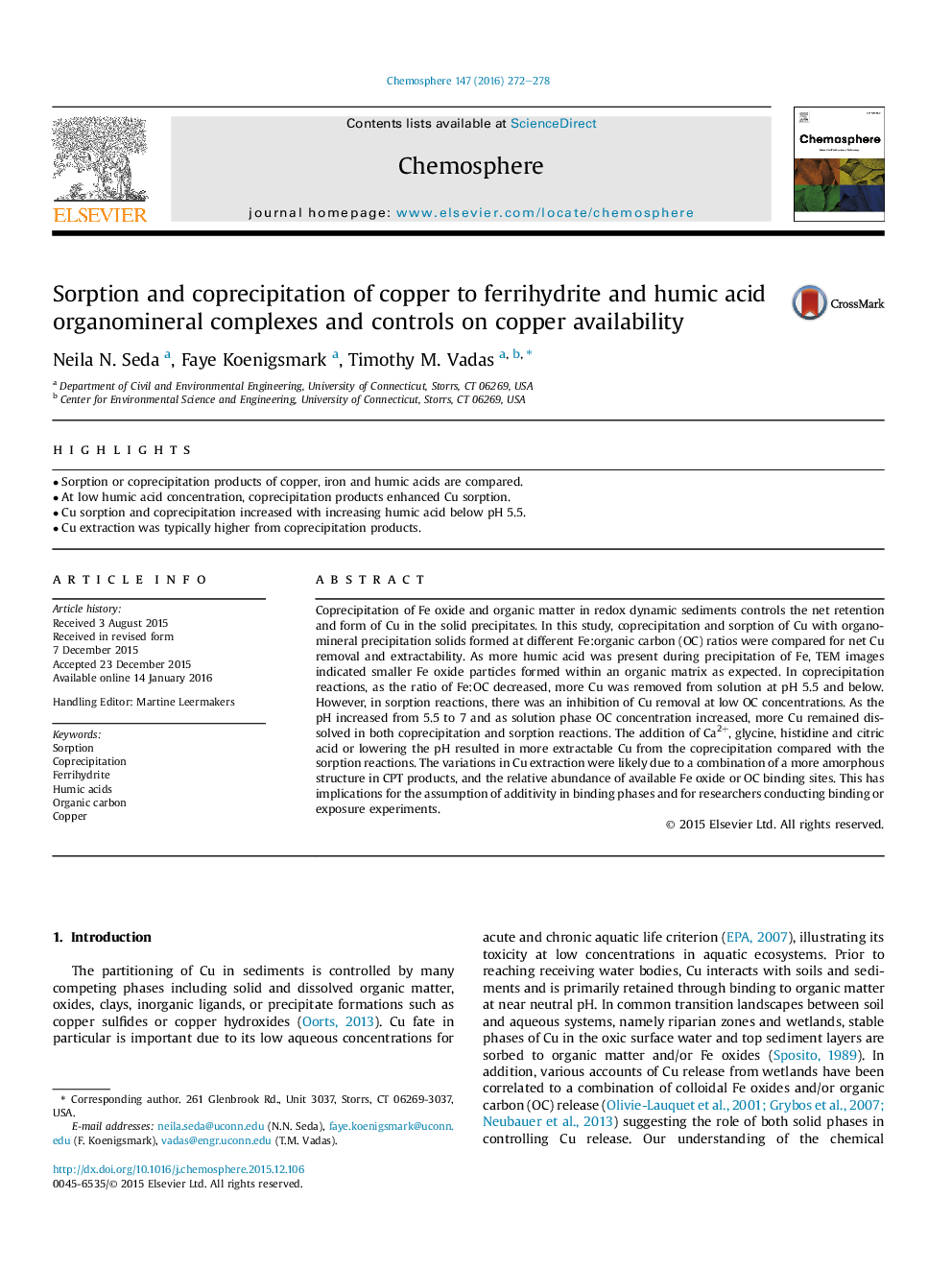| Article ID | Journal | Published Year | Pages | File Type |
|---|---|---|---|---|
| 4408018 | Chemosphere | 2016 | 7 Pages |
•Sorption or coprecipitation products of copper, iron and humic acids are compared.•At low humic acid concentration, coprecipitation products enhanced Cu sorption.•Cu sorption and coprecipitation increased with increasing humic acid below pH 5.5.•Cu extraction was typically higher from coprecipitation products.
Coprecipitation of Fe oxide and organic matter in redox dynamic sediments controls the net retention and form of Cu in the solid precipitates. In this study, coprecipitation and sorption of Cu with organomineral precipitation solids formed at different Fe:organic carbon (OC) ratios were compared for net Cu removal and extractability. As more humic acid was present during precipitation of Fe, TEM images indicated smaller Fe oxide particles formed within an organic matrix as expected. In coprecipitation reactions, as the ratio of Fe:OC decreased, more Cu was removed from solution at pH 5.5 and below. However, in sorption reactions, there was an inhibition of Cu removal at low OC concentrations. As the pH increased from 5.5 to 7 and as solution phase OC concentration increased, more Cu remained dissolved in both coprecipitation and sorption reactions. The addition of Ca2+, glycine, histidine and citric acid or lowering the pH resulted in more extractable Cu from the coprecipitation compared with the sorption reactions. The variations in Cu extraction were likely due to a combination of a more amorphous structure in CPT products, and the relative abundance of available Fe oxide or OC binding sites. This has implications for the assumption of additivity in binding phases and for researchers conducting binding or exposure experiments.
